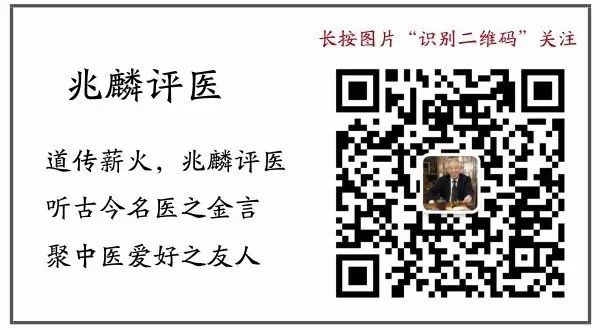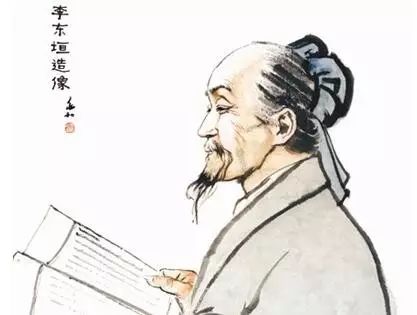
Lu Zhaolin comes from a family of traditional Chinese medicine practitioners. His father, Lu Chunpu, studied under one of the four great doctors of Beijing, Shi Jinmo. Influenced by his family’s teachings, he entered the Beijing College of Traditional Chinese Medicine (now Beijing University of Chinese Medicine) in 1959 and graduated in 1965, remaining at the school as a professor and doctoral supervisor. In 2012, he was recognized as a guiding teacher for the fifth batch of national experts in traditional Chinese medicine. He has extensive experience in diagnosing and treating diseases across internal medicine, surgery, gynecology, and pediatrics.
In the early days of the sixth month of the Wushen year, the patient Bai Wenju, aged sixty-two, had a history of spleen and stomach deficiency. He experienced eye ailments, with his face and eyes appearing yellow, urination either yellow or white, irregular bowel movements, reduced appetite, shortness of breath, lethargy, and weakness in his limbs. By mid-June, the eye condition worsened, and the doctor prescribed a liver-clearing formula, which exacerbated the previous condition. I noted that while Da Huang (Rhubarb) and Qian Niu Zi (Morning Glory Seed) could eliminate damp-heat, they could not enter the liver meridian and first entered the stomach. Da Huang is bitter and cold, which can further weaken the stomach; Qian Niu Zi is very pungent and can drain qi, which can further weaken the lung. The root cause of the problem was not addressed, and the underlying deficiency became more pronounced, especially during the hot and rainy season, leading to a worsening of the condition. Therefore, it was necessary to tonify the spleen, stomach, and lung, while draining the damp-heat from the exterior meridians, using the Qing Shen Yi Qi Decoction to treat him.
Qing Shen Yi Qi Decoction
Fu Ling (Poria) 2 fen, Sheng Ma (Cimicifuga) 2 fen, Ze Xie (Alisma) 3 fen, Cang Zhu (Atractylodes) 3 fen, Fang Feng (Siler) 3 fen, Sheng Jiang (Fresh Ginger) 5 fen, Qing Pi (Green Tangerine Peel) 1 fen, Ju Pi (Tangerine Peel) 2 fen, Gan Cao (Licorice) 2 fen, Bai Shao (White Peony) 2 fen, Bai Zhu (White Atractylodes) 2 fen, Ren Shen (Ginseng) 5 fen, Huang Bai (Phellodendron) 1 fen, Mai Dong (Ophiopogon) 2 fen, Ren Shen (Ginseng) 2 fen, Wu Wei Zi (Schisandra) 3 fen.
All ingredients should be ground to the size of mung beans, combined into one dose, boiled with two cups of water until reduced to one cup, strained, and taken warm on an empty stomach.
—— From “The Treatise on Spleen and Stomach”
The patient, nearing eighty-eight years of age, had already experienced a decline in vitality, compounded by chronic spleen and stomach deficiency, leading to both congenital and acquired deficiencies. The inability to transform food into essence resulted in the accumulation of damp-heat, indicating a fundamental deficiency with a superficial excess.
Damp-heat caused yellowing of the eyes and face; deficiency in the middle jiao led to white urine, while damp-heat descending caused yellow urine, hence the urination being either yellow or white; damp-heat obstruction led to irregular bowel movements and reduced appetite; dysfunction in the middle jiao resulted in shortness of breath and difficulty in breathing. The spleen and stomach are the source of vitality, hence the lung was primarily deficient, while the liver excess remained unaddressed.
Thus, the treatment focused on clearing heat and benefiting qi, tonifying the spleen, stomach, and lung, while draining the damp-heat from the exterior meridians.
Fang Feng, Sheng Ma, Fu Ling, and Ze Xie all help to move through the meridians and eliminate dampness; Ren Shen, Bai Zhu, and Gan Cao all tonify and benefit qi; Huang Bai, Mai Dong, and Wu Wei Zi clear damp-heat and yin fire, with three of these being the original ingredients of the Sheng Mai San (Generate the Pulse Powder), hence the prominent use of Ren Shen in this formula.
From the above case, it is evident that Li’s approach to treating spleen and stomach internal injury diseases primarily focuses on tonifying and uplifting the middle qi, while also employing methods to drain dampness and clear fire, which can be adjusted according to the situation.
Li Dongyuan
Li Dongyuan (1180–1251), originally named Li Gao, styled Mingzhi, later known as Dongyuan Laoren, was a native of Zhen Ding during the Jin and Yuan dynasties (now Zhengding, Hebei). He was a disciple of Zhang Yuanshu of Yishui and proposed the theory that “internal injuries to the spleen and stomach lead to all diseases,” founding the theory of spleen and stomach in traditional Chinese medicine, making significant contributions to the treatment of internal injuries and miscellaneous diseases. He is regarded as the founder of the Soil-Tonifying School and one of the four great masters of the Jin and Yuan dynasties.
Li had extensive clinical experience, with unique treatment methods, adept at tonifying the spleen and stomach, uplifting yang qi, and draining yin fire to regulate various diseases. His influence on internal medicine during the Ming and Qing dynasties was profound, with practitioners like Xue Lizhai, Wang Shishan, Li Zhongzi, Zhang Lu, and Hu Shenrou being notable followers of his academic thought.
Li’s medical cases are relatively few, scattered in the “Lan Shi Mi Cang” and “Treatise on Spleen and Stomach,” arranged in a format of theory followed by cases, with the writing style of each case primarily being narrative.
Since the publication of medical case studies such as Qian Yi’s “Pediatric Medical Evidence Directives,” Xu Shuwei’s “Universal Practical Formulas,” and “Discussion on Cold Damage” in the Song dynasty, the documentation of medical cases has become increasingly common. They are not only found in historical and literary texts, but many physicians from the Jin and Yuan dynasties have left behind medical cases, although most do not have dedicated case study texts, and the recorded cases are often appended to medical theories to validate their correctness. Such works typically consist of medical theory followed by case examples. This method not only reflects the academic characteristics of each physician, such as Dongyuan’s proficiency in tonifying the spleen and uplifting yang, Danxi’s expertise in resolving phlegm and unblocking stagnation, and Gu’s focus on treating yin conditions, but also demonstrates their comprehensive approach to diagnosis and treatment, as well as the consistency of principles, methods, and prescriptions. From these medical cases, one can summarize the medical standards of the Jin and Yuan eras and the unique clinical experiences of various physicians from that time.
The treatment experiences of physicians from the Jin and Yuan dynasties are also distinctive. Here, we select cases from Li Dongyuan, Luo Tianyi, Wang Haogu, Zhang Congzheng, Wang Zhongyang, Zhong Shenqinx, Zhu Danxi, and Hua Shou for analysis.
Related Articles
Analysis of Numbness Wind Syndrome: Treating Spleen Deficiency Rather Than the Liver: Selected Cases from Li Dongyuan (Part One)
(This article is excerpted from “The Study of Traditional Chinese Medical Cases” edited by Mr. Lu Zhaolin)
=========================


